Article & Photos By David Yadock
Dry Gulch & Western, A Photo Series Part 8
I’m sure there are some of you that are interested in operations and how it plays out on my layout. At first, I was only interested in “running trains” and layout photography. After an invitation to participate in the Oly-Ops operating sessions from Ed Liesse my view on operations changed. I admit my layout wasn’t specifically designed for operational running of trains, but I have made some significant changes to lend itself to be more operations friendly. The two main yards were migrated closer to the aisles and additional sidings were added to the track plan.
Yes, being an operator on my layout requires some skill but running a freight or yard can be an enjoyable experience even for the novice. The easy jobs are passenger trains and fast freights. These allow a first-time operator to learn the basic operation of the layout and to determine exactly where cities/yards are on the layout. They also learn the location of critical passing sidings. Another element on my layout is tonnage. Yes, trains can stall on some of my main line trackage. Operators really need to follow their train and be aware of the tight curves on steep grades. This can cause a standard freight to come to a dead stop and just sit and spin its drivers. Some trains may need to double a mountain grade while other freights need a pusher locomotive to help with the grade. This is all part of the fun!
For the basics, I use car cards and the “mother may I” approach for dispatching/yard control. There is no distinct schedule for trains to run but that may change in the future. There are a variety of jobs, some can be easy, some can be challenging, but all are a lot of fun. The jobs range from passenger trains, mixed freights, peddler freights, fast freights, transfer runs between yards, branch line local runs, and a couple yard jobs. There are enough jobs for 6-7 operators. Operating sessions run about 1-1.5 hours. Now onto more of the layout tour.
Photo 36 shows the view looking down my large canyon. To the extreme left is my curved wooden trestle that carries the mainline out of Dry Gulch. On the upper right is the arch bridge spanning the valley where the town of Hayes River is located. The scenery in the foreground is still incomplete but most of the scenery further into the canyon is finished. For you John Allen fans this photo may remind you of his layout. Again, I tried not to copy his layout but to produce similar scenes. Please excuse the car cards sitting on top of the freight cars!
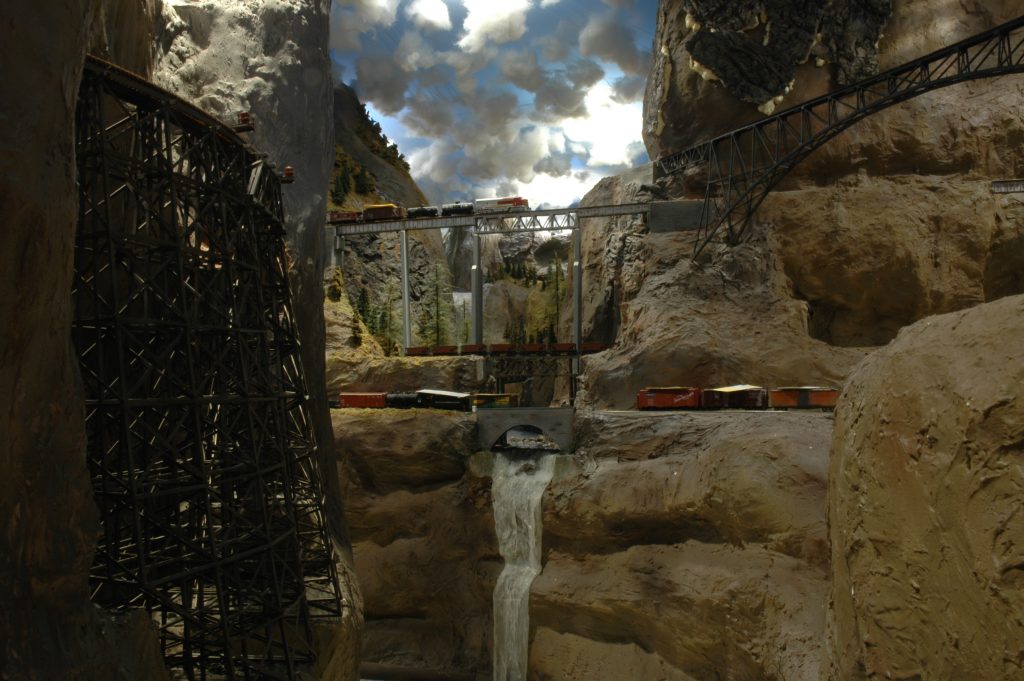
Photo 37 gives a low angle view looking at the town of Hayes River. A smaller yet to be named town resides higher up in the photo. During the Covid-19 stay at home situation I have done some plaster surgery in this area, so it has changed a bit from when these photos were taken. The track that has the ore cars on it is the narrow-gauge line leading to Electric City. The bridge in the lower right carries the mainline spiral around the mountain. You may note the white block with number 25 on it in front of the “Selecto” reefer, those marker buoys help identify the turnout on the control panel. These were a great suggestion made by Russ Segner. I did make them removeable for photos but since these photos were taken right after an operating session I chose to leave them in place.
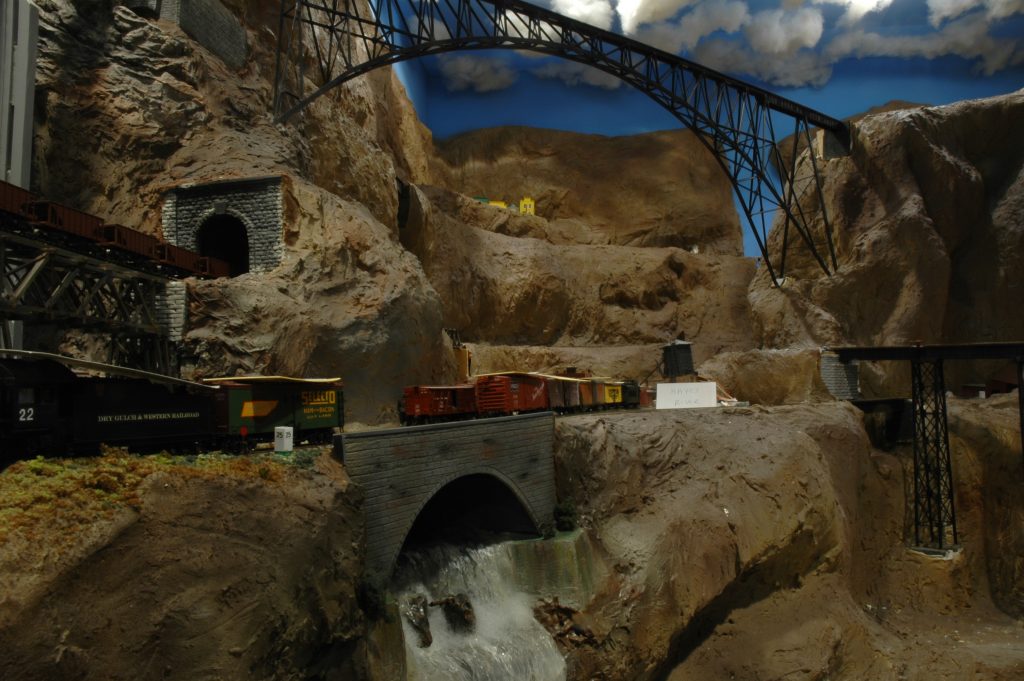
Photo 38 is a high view of the arch bridge. The town of Hayes River is below with its access hole. The “no name” town is in the corner of the room. Hmm, I have lots of scenery to complete!
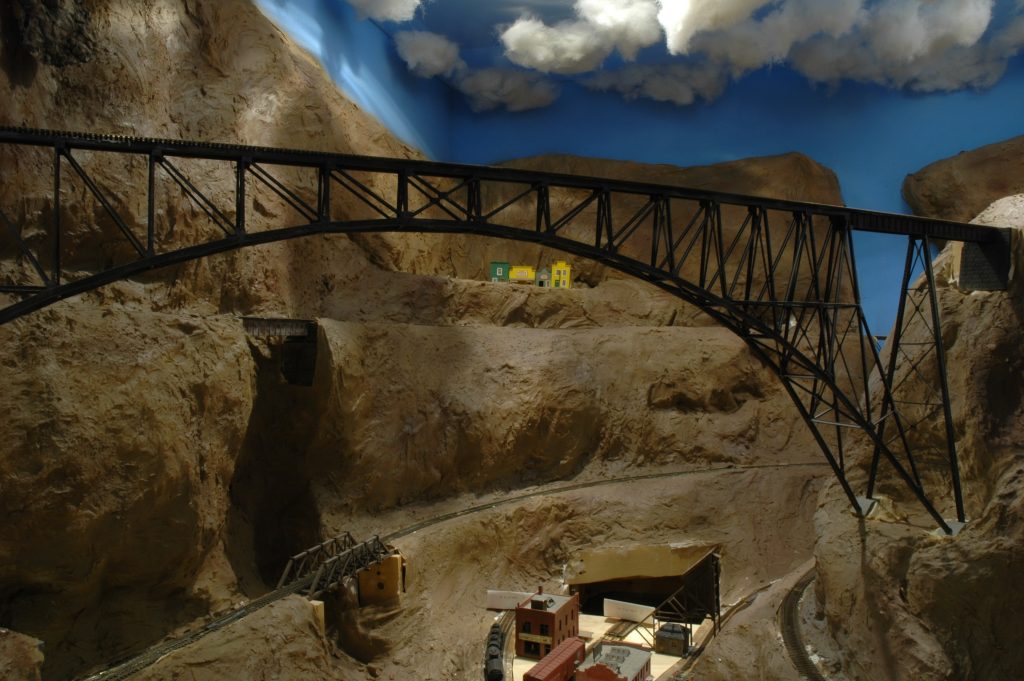
Photo 39 is a view of all the bridges that traverse the Hayes River. Way in the back is a wooden thru-span, up front is the silver colored high bridge, beneath it is the wooden deck truss that the narrow-gauge line uses, and finally up front is a stone arch bridge. The tunnel to the left in the photo leads to Electric City far in the valley by the tall waterfall in the background.
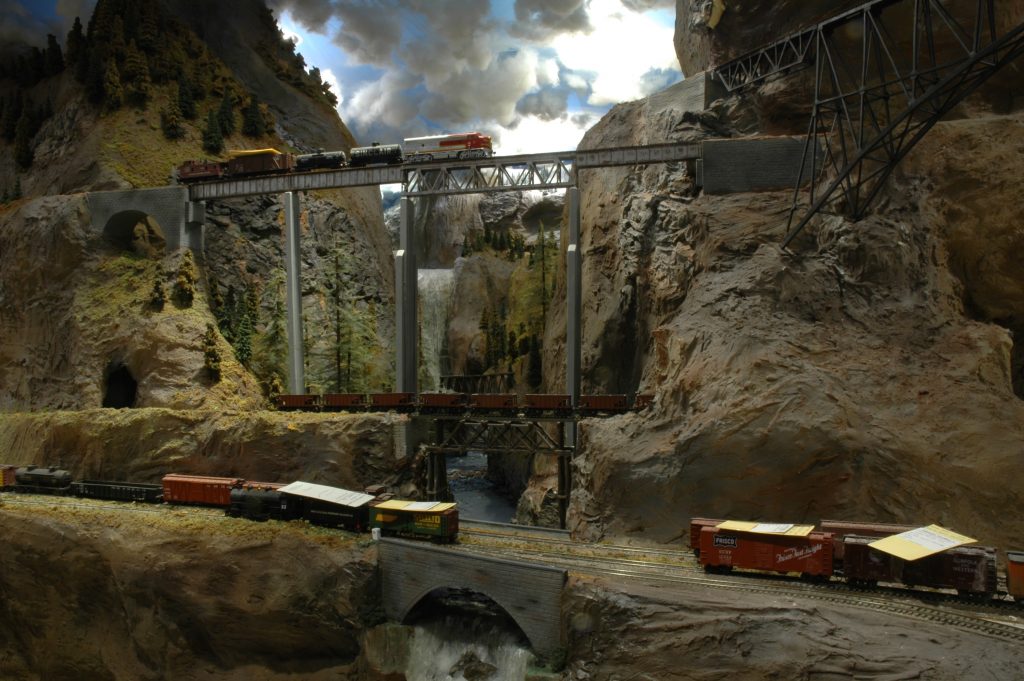
Photo 40 is a helicopter view of the valley taken just in front of the high bridge. This photo gives a better view of the wooden thru-span bridge from photo 39. On the right you can see the gray painted water tower and part of the town called Tallyn Pass. Most of it his hidden in this photo. It has a nice witch’s hat roof station. The station was built from plans of the South Lyon station that is still located in Michigan. You can also see the snow-covered mountains in the background. Can you spot where the mirror is located? How about the location of the access hatch? If any of you have seen my clinic called “Art of Deception” then you will know where they are located. Directly behind the mountain to the left is the small town called Electric City. It has a small station and an electricity generating facility at the base of the waterfall. The mountains along the wall in this area have multi-color LED strip lights behind them. Those lights can be turned on to produce a realistic sunset lighting effect.
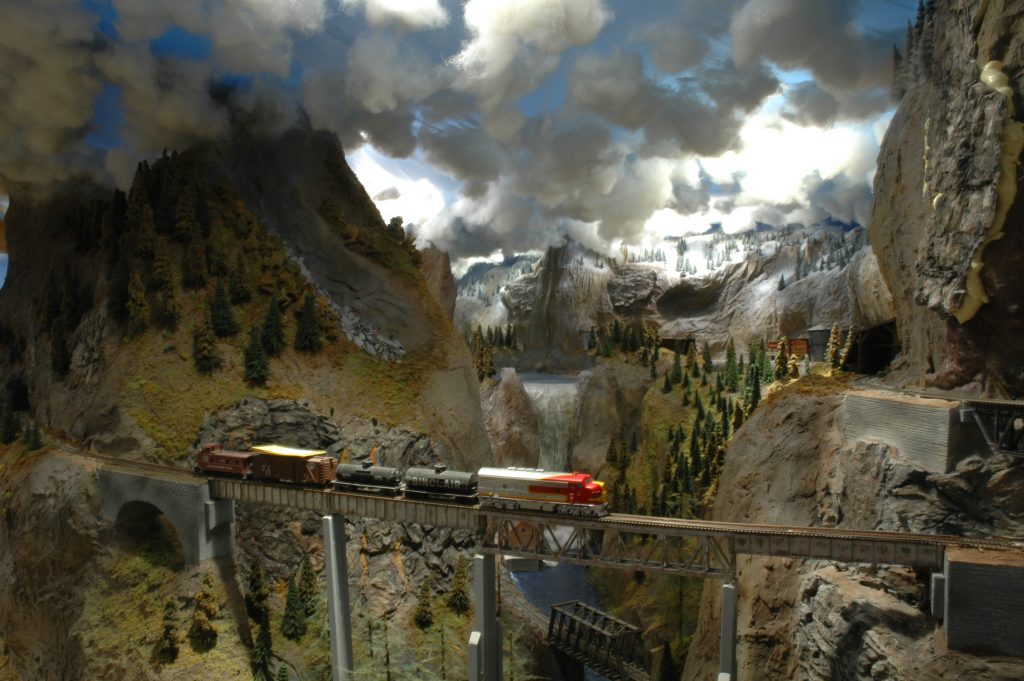
Next time we will move further down the mainline. Could there be even more bridges?
David

No Comments Yet